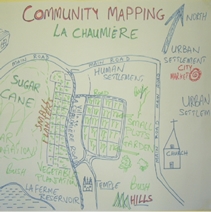Climate change is a study in injustice, as the people least responsible suffer the brunt of its impacts.
An excellent brief was released this week by CARE: Adaptation and Food Security. In this short brief, they provide a thorough synopsis of both climate change impacts and potential adaptive solutions.
Climate change impacts on food security:
It is estimated that food production will need to increase by 50 percent by 2030 just to keep up with the demands of a growing global population. At the same time, climate change is projected to cause decreases in global cereal production. These decreases will be greatest in developing countries, and particularly in South Asia and sub-Saharan Africa. Reduced production leads to increasing food insecurity, particularly for rural families in developing countries who are net buyers of food.
| A Study in Injustice | |
 |
WFP estimate that globally, 10-20 percent more people will be at risk of hunger by 2050 than would be without climate change. Of these, almost all will be in developing countries, with 65 percent expected to be in Africa. This has severe implications for nutrition, particularly for children. In sub-Saharan Africa, it is estimated that 10 million more children will be malnourished as a result of climate change. |
| Defining food security: FAO | |
 |
‘Food security exists when all people at all times have physical or economic access to sufficient, safe and nutritious food to meet their dietary needs and food preferences for an active and healthy life.’ |
In places where people are vulnerable to both climate change impacts and food insecurity, it is necessary to adopt an integrated approach which addresses resilient livelihoods, risk reduction and the underlying causes of vulnerability and food insecurity (for example, by promoting conservation agriculture practices, restoration of degraded soils and agricultural biodiversity).
Integrated adaptation strategies include:
- Increasing agricultural productivity, climate resilience and sustainability, particularly for smallholder farmers
- Promoting rights of vulnerable people, particularly women, to critical livelihood resources such as land and water
- Integrated water resource management
- Sustainable land use management and ecosystem services
- Technology transfer (irrigation, conservation and sustainable agriculture, biogas technology, etc.)
- Disaster risk reduction strategies
- Enhancing government capacity to implement social protection schemes
- Linking emergency food assistance to longer term food security responses
- Promotion of savings and insurance schemes
Read this excellent 5 page brief:
CARE International Climate Change Brief: Adaptation and Food Security 2011
How much of an impact do YOU think climate change is going to impact food production, food security and nutrition?

